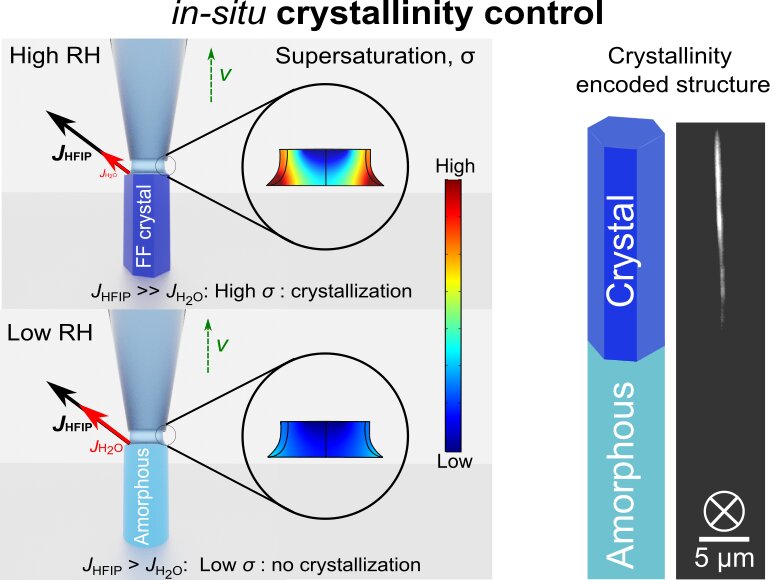New microscale 3D printer for multi-level anticounterfeiting labels
Counterfeiting threatens the global economy and security. According to the report issued by the United States Patent and Trademark Office (USPTO) in 2020, the value of global counterfeit and pirated products is estimated to be between US$1.7 and 4.5 trillion a year.
Despite enormous efforts, conventional anticounterfeiting approaches such as QR codes can be easily fabricated due to limited data encryption capacity on a planar space. So how can we increase the encryption density in a limited space?
The team led by Dr. Ji Tae Kim from the Department of Mechanical Engineering at the University of Hong Kong (HKU) has developed a high-precision 3D printing method that can produce new polarization-encoded 3D anticounterfeiting labels. This new 3D label can encrypt more digital information than a traditional 2D label.
Their work has been published in Nano Letters in an article entitled “Three-Dimensional Printing of Dipeptides with Spatioselective Programming of Crystallinity for Multilevel Anticounterfeiting.”
Diphenylalanine (FF), a species of dipeptides, was chosen as a material for data encryption due to its unique optical properties. Dr. Jihyuk Yang from the Department of Mechanical Engineering, HKU, explained, “FF has long attracted great attention to neuroscientists due to its association with Alzheimer’s disease. Recently, FF is emerging as a new electronic and photonic device material due to its unique properties—e.g., piezoelectricity and optical birefringence—arising from crystalline nature.” Dr. Yang is the first author of the paper.
“Our new 3D printing method combined with nature-driven molecular self-assembly can print multi-segmented 3D FF micro-pixels with programmed crystallinity for high-density data encryption. By utilizing different responses of the amorphous and crystalline segments to polarized light, a tiny single 3D pixel can encrypt a multi-digit binary code consisting of ‘0’ and ‘1.’ The information capacity can be increased to 211 with a single eleventh-segmented freestanding pixel on a tiny 4 µm2 area which is 1,000 times smaller than a hair strand,” said Dr. Ji Tae Kim.
He believes that 3D printing technology can be effectively used to customize security labels on-demand anywhere and anytime, contributing to strengthening the information security of individuals and companies.
Jihyuk Yang et al, Three-Dimensional Printing of Dipeptides with Spatioselective Programming of Crystallinity for Multilevel Anticounterfeiting, Nano Letters (2022). DOI: 10.1021/acs.nanolett.2c01761
Citation:
New microscale 3D printer for multi-level anticounterfeiting labels (2022, December 13)
retrieved 13 December 2022
from https://techxplore.com/news/2022-12-microscale-3d-printer-multi-level-anticounterfeiting.html
This document is subject to copyright. Apart from any fair dealing for the purpose of private study or research, no
part may be reproduced without the written permission. The content is provided for information purposes only.
For all the latest Technology News Click Here
For the latest news and updates, follow us on Google News.

